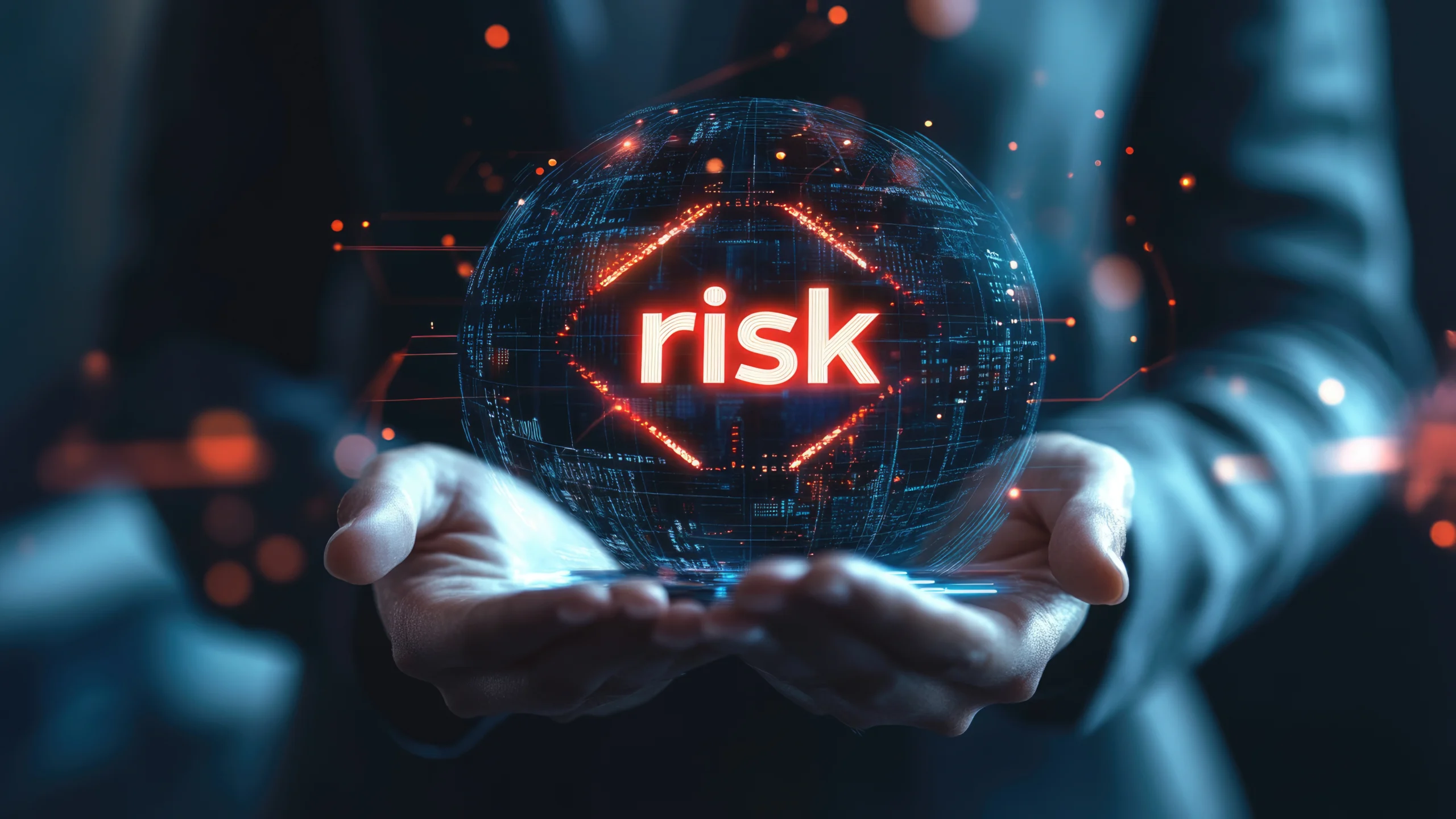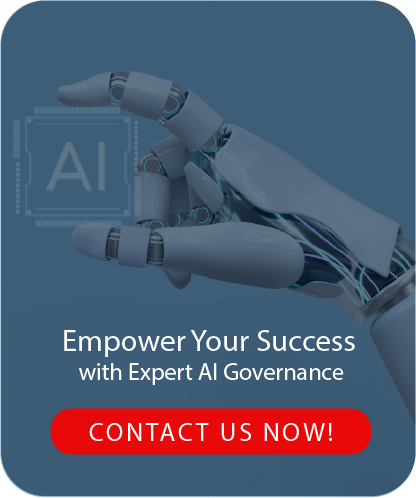
Could the next tech revolution bring more risks than benefits? With over 77% of companies using or exploring artificial intelligence, the need for good AI risk management is urgent. As more businesses rely on algorithms and machine learning, the chance of cyber attacks, biased algorithms, and legal issues grows. These problems can cost companies a lot, both financially and in terms of trust.
Businesses must focus on ethical AI management and secure practices. This is not just future talk but a pressing need to protect business operations.
Whether it's the 24% of risk experts worried about AI threats or the 45% of companies dealing with AI data leaks, the numbers are clear. But, surprisingly, about 80% of companies are still finding their way without a clear plan for responsible AI use. To tackle these challenges, we need a balanced approach. This means combining ethical AI rules with strict compliance standards to make sure AI helps us, not harms us.
Key Takeaways
- AI risk management is key in preventing costly data breaches and algorithm bias issues.
- A hefty 80% of modern companies are yet to develop a concrete plan to counter generative AI risks.
- AI compliance standards and ethical guidelines play a defining role in mitigating operational failures.
- Regular risk assessments and updates are pivotal in maintaining the safety and integrity of AI systems.
- Effective AI governance involves collaboration, diverse input, and continuous monitoring.
- Future AI implementations may require integrated risk assessment features for real-time analysis.
- Training programs are crucial in empowering employees with the skills to recognize and mitigate AI risks.
The Significance of AI Risk Management in Business Operations
In today's fast-changing business world, using and managing artificial intelligence (AI) is key. It's not just good practice but a must for keeping up with laws, protecting operations, and earning public trust. As more businesses use AI, knowing how to manage its risks is crucial for staying competitive and running smoothly.

Understanding AI Risk Management
Good AI risk management means doing thorough checks to spot and fix potential problems. This includes looking out for things like data leaks or unfair AI decisions. It makes sure AI works right and follows the law and ethics. Keeping an eye on AI systems is a big part of this, helping to catch and fix issues early.
The Impact of Cybersecurity Risks in AI
AI is now a big part of how businesses work, but it also brings more security risks. A recent study found that 96% of leaders think AI could make security worse. Only 24% of AI systems have strong security, showing a big gap in AI safety. This shows how urgent it is to add strong security and have a clear plan for AI safety.
The Cost of Non-compliance and Operational Failures
Ignoring AI risks can lead to big problems. Not following rules like the EU AI Act or GDPR can mean big fines and harm to a company's image. Also, AI failures have cost a lot of money. For example, 45% of companies faced big data problems after using AI, showing how important it is to check and watch AI closely.
| Statistical Data | Implications for AI Risk Management |
|---|---|
| 72% of organizations use AI technology. | Increased need for comprehensive ai risk management. |
| 18% have a dedicated AI governance council. | Emerging focus on formalized governance structures. |
| Only 24% of AI systems secured against threats. | Critical need for enhanced ai security protocols. |
| Regulatory noncompliance leads to severe penalties. | High financial and reputational risks. |
Adding AI to business needs more than just tech changes. It also means being serious about managing risks. Companies should use AI to get better and stay ahead, but also make sure they're safe and ethical. As AI spreads through different business areas, it's more important than ever to have good AI risk management plans. This directly affects how well a company does and how it's seen by others.
AI Risk Management Framework: Best Practices for Implementation
The path to effective AI risk management is filled with ai regulatory frameworks, strict ai ethical guidelines, and careful ai transparency practices. As technology grows, so does the need to manage its risks. This makes a structured AI risk management framework key for organizations to use AI wisely and well.

Understanding and using the NIST AI Risk Management Framework (AI RMF) is crucial. It was made through a process that included public input and workshops. The AI RMF guides businesses in tackling AI challenges while keeping ethics and efficiency high.
| Date | Event | Details |
|---|---|---|
| July 29, 2021 | Initial Public Input | Request for information on AI risk management initiated. |
| March 17, 2022 | First Draft Release | Initial draft of the AI RMF released for further review and comments. |
| July 26, 2024 | Generative AI Profile Release | NIST-AI-600-1 developed to specifically address risks posed by generative AI technologies. |
Using the AI RMF means careful planning and keeping policies up to date. This includes the latest tech and rules. By being open about AI, companies follow rules and gain trust from people and customers. This ensures AI is used in an ethical way.
To handle AI risks well, companies need to check and watch AI systems closely. Studies show that checking AI often can cut down data breaches by about 34%. This shows how important it is to keep an eye on AI to keep it safe and sound.
- Most companies focus on keeping data private when using AI.
- Checking AI often can lower data breaches by about 34%.
- Setting editorial standards can help avoid bad AI content.
In summary, a careful approach to AI risk management is key. It should follow AI RMF guidelines, ai ethical guidelines, and protect against risks. This is the foundation of a smart, ethical, and open AI use plan.
Key Components for Effective AI Risk Management
Creating a strong AI risk management plan is key for companies using AI. It ensures they follow ethical standards and keep data safe. This plan includes checking risks, taking steps to prevent problems, and watching AI systems closely.
Risk Assessment and Prioritization
Starting with a good risk assessment is the first step in AI risk management. It looks at possible dangers and how likely they are. It's also important to follow global rules and laws to build trust.
Developing and Implementing AI Safety Measures
Companies need to create strong safety plans for AI. This means making systems fair, testing them well, and training staff on AI risks. These steps help avoid failures and keep AI systems safe and trustworthy.
Monitoring and Auditing AI Systems
Keeping an eye on AI systems and checking them often is crucial. Using data analytics helps spot problems early. This keeps AI systems working well and builds trust in AI.
| Risk Category | Impact on Data Integrity | Historical Breach Rate | Improvement with Monitoring |
|---|---|---|---|
| Model Tampering | High | 30% | 50% incident response reduction |
| Unauthorized Access | Medium | 25% | Operational hazards down 70% |
| Data Leakage | Critical | 20% | N/A |
Conclusion
As companies aim to lead in innovation, understanding AI risk management is key. AI has changed how we manage risks, helping us deal with big data and make better decisions. It's also great at spotting threats and stopping fraud quickly, making data breaches less common.
AI's power in analyzing unstructured data is changing many industries. It lets companies react fast to new threats. This agility is crucial in today's fast-paced world.
Using AI safely and ethically is vital. It makes sure companies follow rules well and reduce mistakes. But, AI can also have its own risks, like biases and less human control. Keeping an eye on these risks is essential to keep AI systems secure.
AI is making a big difference in managing risks, especially in finance. It has cut down on credit card fraud and made operations more efficient. Yet, there are challenges like biased AI and the need for lots of data.
It's important to balance AI with human judgment for effective risk management. This means using AI in a way that's honest and open. Following ethical guidelines and safety measures is crucial. It builds trust and sets high standards for AI use.
Vinali Advisory: Your Partner in AI Risk Management
At Vinali Advisory, we go beyond identifying AI risks by offering a structured three-phase governance framework. From empowering leadership and designing tailored compliance strategies to ensuring seamless implementation, our team of experts ensures your AI systems are ethical, secure, and aligned with business goals. Ready to future-proof your organization? Contact Vinali Advisory today to safeguard your AI-driven innovations.
FAQ
What is AI risk management and why is it important for businesses?
AI risk management is about finding and fixing risks in AI systems. It's key for businesses to manage these risks well. This ensures AI systems are ethical, follow rules, and support innovation.
Good risk management helps avoid data breaches, biased decisions, and system problems.
How do cybersecurity risks impact AI in the business environment?
Cybersecurity threats like ransomware and deepfakes are big risks for AI systems. They can cause huge financial losses and harm a company's reputation. Businesses must have strong security measures and keep watching their AI systems closely.
This helps protect data and keep stakeholders' trust.
What are the consequences of non-compliance and AI operational failures?
Not following AI rules and AI system failures can lead to big problems. Companies might face legal issues, data leaks, and system problems. This can cost a lot, damage customer trust, and hurt competitiveness.
It shows why it's so important to carefully assess AI risks and follow ethical guidelines.
What are the best practices in AI risk management frameworks?
Good practices include using clear frameworks that focus on AI transparency and ethics. This means setting policies, doing thorough risk checks, and always looking to improve AI governance.
How should businesses approach AI risk assessment and prioritization?
Businesses should carefully look at AI risks and their effects. They can use tools like risk matrices for this. By focusing on the most serious risks, they can better protect against AI problems.
What steps should be taken to develop and implement AI safety measures?
To keep AI safe, businesses should test for biases, invest in error detection, and train staff. They should also have clear rules for using AI. This helps avoid bad outcomes and keeps standards high.
Why is monitoring and auditing AI systems crucial for businesses?
Keeping an eye on AI systems is vital for their integrity and safety. By using analytics and regular checks, businesses can spot problems early. This helps reduce risks, ensures accountability, and keeps strategies up to date with AI changes.






